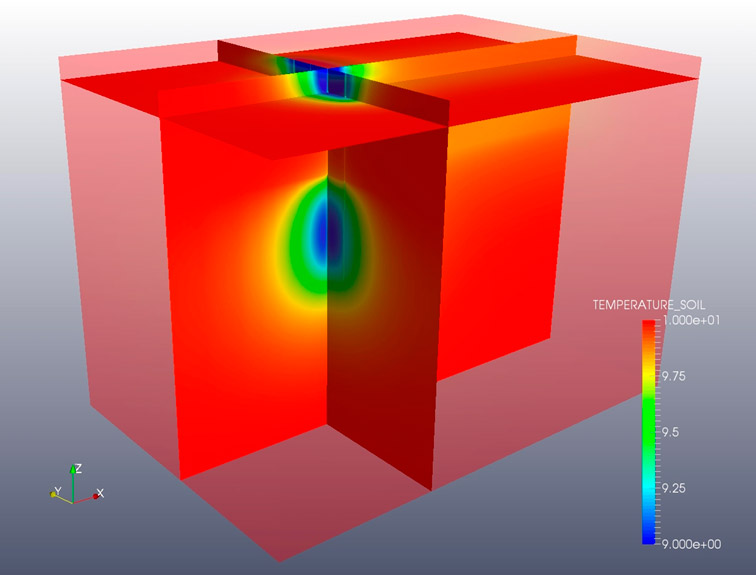SAGS

Project title: Entwicklung von Methoden zur standortoptimierten geotechnischen Auslegung großflächiger Geothermiesysteme
(Project title – English translation: Development of methods for the site optimised geotechnical dimensioning of large-scale geothermal systems)
Short project description:
In the course of the transformation of the energy system in Germany, decentralised heat generation, for example, of urban quarters, is becoming increasingly important. A permanently available, directly usable local thermal potential is provided in particular by the shallow subsurface. For the exploitation of these resources, a basic and sufficient system and process understanding is required to address the complex and partly coupled impacts of geothermal systems among themselves and on protective resources like groundwater reservoirs. This is the basis for the assessment of the potential as well as the risks for a sustainable use of shallow geothermal resources.
The aim of the project was the development of methods for the optimised design of the subsurface components of large-scale geothermal fields for the shallow generation and storage of thermal energy. The optimisation of systems of borehole heat exchangers requires the use of innovative technologies for the exploration of suitable sites, as well as the development of modelling approaches for the analysis of the coupled processes in the subsurface, their numerical realisation and application. Within the project, a numerical model was used for the prediction of the coupled processes in the shallow subsurface surface, and it has been further developed. Based on this, realistic scenarios for the integration of geothermal systems into the subsurface management were defined and simulated. The calibration and validation of the models was carried out based on literature examples (benchmarks) as well as on data from exploration methods. Within the scope of a study, suggestions were made to adapt the current design practice for shallow geothermal systems. The project results can be used by research institutions, industrial partners, and approving authorities in order to evaluate and predict the behaviour of potential sites for the use of shallow geothermal resources.
Project duration: 09/13 – 03/17
Funding organisation: BMBF

Project partners:
- BET Büro für Energieweirtschaft und Technische Planung GmbH (formerly Ingenieurbüro J. Döhler Leipzig)
- Helmholtz Centre for Environmental Research – UFZ
- JB-ingconsult Leipzig
- Leipzig University of Applied Sciences (HTWK) – coordinator
The research for this project was conducted in close cooperation with the Chair of Soil Mechanics and Foundation Engineering at the TU Bergakademie Freiberg.
At the UFZ, research for this project was also conducted at the Department Monitoring and Exploration Technologies.
At the Department of Environmental Informatics, research for this project was being conducted at the workgroup Geothermal Systems Analysis.
Project website: not available
This research was also part of the OpenGeoSys initiative (http://www.opengeosys.org/).
Final report: https://www.tib.eu/de/suchen/id/TIBKAT%3A1013593316
